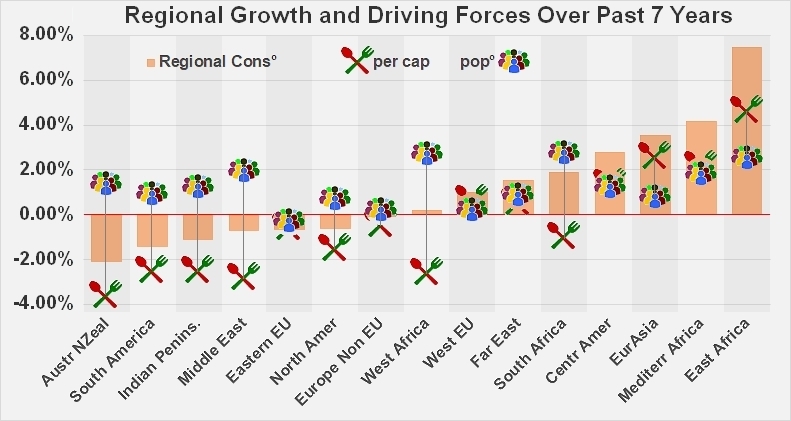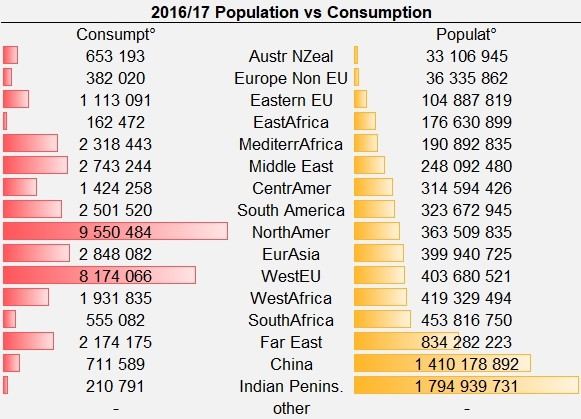Are consumption patterns decreasing, or just changing?
Per capita consumption
Beyond the evolution of consumption in each region, demographic and individual consumption factors combine to accelerate or, on the contrary, slow down the development of consumption.
In absolute terms, the region that consumes the largest volume is North America (9.55 million mT), and it is also the region that records the strongest individual consumption, with the processed equivalent of approximately 26 kg of raw tomatoes consumed per year and per person. But the "mechanical" effect of population growth has not been enough to compensate for the drop in individual consumption, resulting in a decrease from more than 28 kg in 2010/2011 to just above 26 kg in 2016/2017.
Similar patterns can also be observed over recent marketing years in the region of Australia and New Zealand, in South America, the Indian Peninsula and the Middle East, where the drop in individual consumption has overtaken demographic growth, leading to a decrease in overall consumption. Conversely, several regions (Africa, the Far East, Central America, Eurasia, etc.) recorded particularly positive consumption growth rates, where the increase in levels of individual consumption has amplified the effects of demographic growth.

In summary, over the past seven years, the results of various regional dynamics have led to a slightly negative development of average worldwide individual consumption: the worldwide level dropped from 5.1 kg/year/person in 2010/2011 to 5.0 kg/year/person in 2016/2017. At the same time, the average annual increase in worldwide population (CAGR +1.17%) has compensated the erosion of per capita consumption, leading to the worldwide growth that has already been stated (+0.74%).
Some complementary data
Parallel presentation of regional consumption figures (in tonnes) and of regional populations (ranked in order of increasing size).

Source: IHS, Tomato News
You can find a more detailed version of this article in the TOMATO NEWS “2018 Processed Tomato Yearbook”. This 100-pages publication gives a comprehensive picture of the global tomato processing industry in 2018 with detailed production figures, a description of the industry in each of the main processing countries, a detailed analysis of trade statistics, the latest WPTC consumption study, prices of tomato paste, a summary of all articles published online in the last year and the complete industry directory.
Copies of the YEARBOOK, which was distributed to all attendees at the 13th World Processing Tomato Congress, can be purchased at a cost of 75 euros (+VAT if applicable but including global postage) from
http://www.tomatonews.com/en/get-listed_5.html































